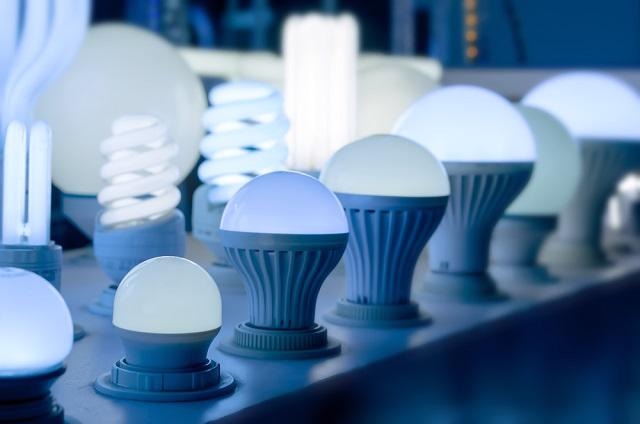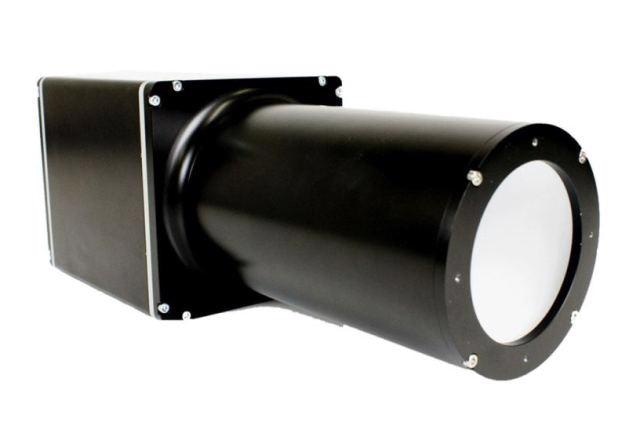Sponsored by AdmesyFeb 10 2016
In recent years the use of solid-state lighting technology, such as light emitting diodes (LEDs), has become increasingly prevalent due to the vast amounts of energy they save; reducing both lighting costs and environmental impact.

Image Credit: DK.samco/Shutterstock.com
In the US, the use of LEDs more than quadrupled (to 215 million units) between 2012 and 2014 according to a report from the Department of energy.1
This growth has drawn attention to the potential of LED’s to produce flicker; an effect which can be harmful to human health. Flicker is the rapid and repetitive modulation (change) of a light’s brightness. Although the effect is apparent in many types of lighting it is more significant in LEDs and can often be attributed to the design of their drivers.
Visible and Invisible Flicker
Flicker generally falls into two categories, visible and invisible.2
Visible flicker, which is typically below 100Hz, is both sensed and perceived; meaning the flicker is visually obvious. Visible flicker can result in seizures in people with photo-sensitive epilepsy after only a few seconds of exposure.
On the other hand, invisible flicker is sensed but not perceived; meaning the flicker is of too high a frequency to be obvious to a human observer. Although the observer may not be aware of the flicker, their neurons are still responsive to it.
After prolonged exposure in bright light environments, such as shops and offices, this can lead to malaise, headaches, nausea and eye strain. Invisible flicker can also interfere with eye movements and lead to a decrease in performance at tasks such as reading.
This is evidently a cause of concern for businesses who wish to keep their productivity and staff satisfaction at optimum levels. Studies have shown that removing flickering LEDs has been shown to increase productivity by 8% and staff happiness levels by up to 33%.

Flicker has been shown to reduce productivity and employee happiness. Image Credit: dotshock/Shutterstock.com
Although invisible flicker is often sensed unconsciously, it can be observed if it causes effects like the phantom array effect or the stroboscopic effect. The phantom array effect results in multiple objects being observed, i.e. ‘seeing double’, the stroboscopic effect is similar however multiple discrete images of moving objects are observed instead.
The Adverse Biological Effects of Flicker
The effect of flicker depends on characteristics such as the light’s frequency and modulation depth (the magnitude by which the flicker deviates). Most people can perceive flicker with a modulation depth of less than 1%.3
Certain groups of people are more sensitive to flickers, such as children and people with epilepsy, migraines or autism.4,5 The most well-known effect of flicker is photosensitive epilepsy which affects 1 in 4,000 people.
The likelihood of a seizure occurring in a photosensitive individual depends on several factors such as the flash frequency, brightness, contrast, and wavelength of the light. Migraines are also triggered by bright lights, which are more irritating if they flicker slowly. About 11% of people worldwide are thought to have active migraine disorders.
Flicker is also thought to cause increased repetitive behavior in individuals with autism, however not enough research has been carried out to prove a causal effect. This change in behavior has been reported by carers who work with autistic children, who often take measures to minimize its effects. These include replacing old bulbs (which are more likely to produce flicker) or sitting affected people near a window.
Some evidence has shown that panic attacks, anxiety, and vertigo can also be induced by flicker but these effects are yet to be studied further.
Standardizing Flicker Measurements
If the use of LEDs continues to grow the ability to be able to accurately measure the amount of flicker they produce is essential. The amount by which an LED flickers vary widely with some LEDs producing no flicker and others producing unhealthy amounts. The amount of flicker is not just caused by the LED; the addition of other components on the lighting circuit, such as dimmer switches, can also increase flicker.
The measurement of flicker for LEDs to be used in key environments such as classrooms, offices, and hospitals should be a priority in order to avoid the adverse effects caused by flicker.
Although flicker metrics exist as the measurement procedure has never been standardized it makes comparisons between LEDs measured using different methods difficult. The two metrics most commonly used are the Percentage Flicker, which is well established and easy to calculate, and the Flicker Index, which is harder to calculate but gives more useful information on the nature of the flicker.6
Whilst they both account for amplitude variation and average levels, only the Flicker Index accounts for differences in waveform shape and duty cycle. Traditional light sources typically have a Percentage Flicker of 40% and a Flicker Index of 0.15 (which is measured on a scale of 0 to 1). The threshold at which each of these measurements indicates the potential of the LED flicker to be a health hazard is yet to be established.
The Future of Flicker Measurement
Producing a metric that can accurately assess flicker levels, irrespective of the lighting technology still presents a challenge. To make it a reality, it is likely to require collaboration between manufacturers, industry bodies and lighting researchers.
Organizations like The International Commission on Illumination (The CIE, Commission Internationale de l’Eclairage) are considering developing a measurement standard and metric, whilst the Institute of Electrical and Electronics Engineers the (IEEE) is planning on providing recommended practices for the application of flicker information.7,8
Reliable ways to measure flicker, in accordance with new ideas from organizations such as the CIE and IEEE, are already in development by manufacturers such as Admesy. Admesy, Advanced Measurement Systems, has invaluable knowledge and expertise in the fields of color and light measurement.

The Cronus Bhahkar from Admesy. Image Credit: Admesy
One of the latest additions to Admesy’s range is the Cronus Bhaskar. The device combines a VIS spectrometer and tri-stimulus colorimeter to offer detailed spectral information on LED bulbs. The highly accurate measurements include extensive measurement of the flicker as well as high-speed color and intensity measurements. The Cronus Bhaskar is optimized to be used on-line meaning LED suppliers can accurately test the quality of their LEDs with no loss in productivity.
References and Further Reading
- Department of Energy Report – Adoption of LEDs in Common Lighting Applications
- IEEE Standards Association - Recommended Practices for Modulating Current in High-Brightness LEDs for Mitigating Health Risks to Viewers
- Luma Stream - LED Lighting and Workplace Productivity
- FineLite - Flicker in LEDs
- Architecture and Lighting - LEDs and Flicker
- Energy.gov - Early Lessons Learned from Solid State Lighting
- The International Comission on Illumination
- IEE - FLicker Measurements and its Effect

This information has been sourced, reviewed and adapted from materials provided by Admesy.
For more information on this source, please visit Admesy.